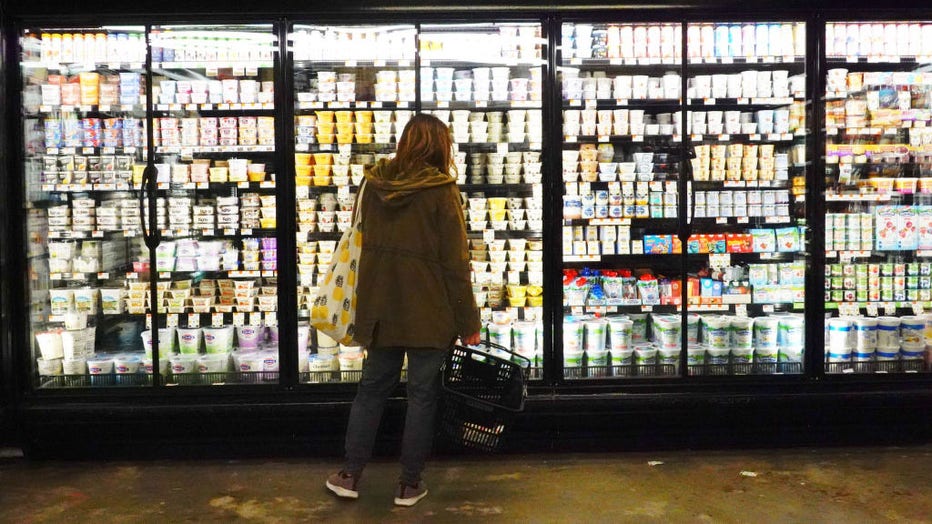December inflation report could show another month of price cooling
WASHINGTON – The US inflation report for December, released on Thursday morning, could be another encouraging sign that the worst price spike in four decades is easing.
Or it could mean that inflation remains resilient enough to warrant tougher action from the Federal Reserve.
Most economists see a more optimistic scenario: they see December as yet another month in which inflation, while still uncomfortably high, continued to decline. Analysts had forecast consumer prices rose 6.5% in December from a year earlier, according to a survey by data provider FactSet. This will be below 7.1% in November and well below the 40-year high of 9.1% in June.
Economists believe that, on a monthly basis, prices did not change in December. More importantly, the closely watched measure of “core” prices, which excludes volatile energy and food prices, is expected to rise by just 0.3% from November to December and 5.7% from a year earlier. The Fed keeps a close eye on benchmark prices, which it considers a more accurate indicator of future inflation, when setting its interest rate policy.
Another modest increase in benchmark prices will increase the likelihood that the Fed will raise its benchmark rate by just a quarter of a point, rather than half a point, when its next meeting ends on Feb. 1.
For now, inflation is falling, with the average price of a gallon of gas nationwide down from a peak of $5/gallon in June to $3.27/gallon as of Wednesday, according to AAA.

The confusing supply chains that previously led to the overpricing of goods have largely been resolved. Consumers have also shifted much of their spending from physical goods to services such as travel and entertainment. As a result, the value of commodities, including used cars, furniture, and clothing, fell for two consecutive months.
On Thursday, economists will pay special attention to service prices, which are seen as a more stable component of inflation. They reflect rising wages among labor-intensive businesses such as restaurants, hotels and medical companies.
If the data shows only a modest increase in the cost of services, it is likely to bolster hopes that the economy can avoid a recession and experience a soft landing instead. Such a scenario would mean slow growth and probably a small increase in unemployment, but much less economic pain than a full-blown recession.
Indeed, last week’s employment report reinforced the likelihood that a recession could be avoided. Even after seven Fed rate hikes last year, and with inflation still high, employers added a solid 223,000 jobs in December, and the unemployment rate fell to 3.5%, its lowest level in 53 years.
At the same time, growth in average hourly wages has slowed, which should relieve pressure on companies to raise prices to cover higher labor costs.
“The soft landing story gained some credibility this year, and it also led to a stock market rally,” said Michael Arone, chief investment strategist at State Street Global Advisors.
CONNECTED: Data shows a record number of Americans are paying $1,000 or more per month in monthly car payments
Another positive sign of the Fed’s efforts to quell inflation is that Americans generally expect price increases to decline over the next few years. This is important because so-called “inflationary expectations” can come true: if people expect prices to continue to rise sharply, they tend to take steps, such as demanding higher wages, that can perpetuate high inflation.
On Monday, the Federal Reserve Bank of New York said that consumers now expect 5% inflation over the next year. This is the lowest such expectation in nearly 18 months. Over the next five years, consumers expect inflation to average 2.4%, just slightly above the Fed’s 2% target.
However, in their speeches in recent weeks, Fed officials have emphasized their intention to raise their base short-term rate by another three-quarters of a point in the coming months to just above 5%. The increase comes in addition to seven increases last year that nearly doubled mortgage rates and made auto and business loans more expensive.
Futures prices show that investors expect the central bank to be less aggressive and implement just two quarter-point hikes by March, keeping the Fed rate just below 5%. Investors are also predicting the Fed will cut rates in November and December, according to the CME FedWatch Tool.
Fed Chairman Jerome Powell tried to counter that expectation of fewer raises this spring and cuts by the end of the year, which could make the Fed’s job harder if investors drive up stock prices and lower bond yields. Both trends could contribute to faster economic growth just as the Fed is trying to cool it down.
The minutes of the Fed’s December meeting note that none of the 19 politicians foresees a rate cut this year.
However, last week James Bullard, President of the Federal Reserve Bank of St. Louis, expressed some optimism that this year “actual inflation is likely to follow inflation expectations to a lower level”, suggesting that 2023 could become a “year of disinflation”.
CONNECTED: Record high rise in the cost of living in the social security system will begin soon
Dallas Press News – Latest News:
Dallas Local News || Fort Worth Local News | Texas State News || Crime and Safety News || National news || Business News || Health News
texasstandard.news contributed to this report.










